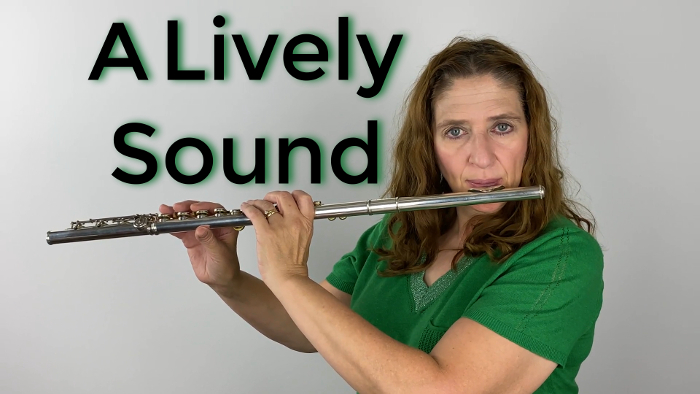Could you name some of the aspects of tone that separate the amateur flutist from the professional?
What is it that makes their sound so special? I can help you with one of the aspects.
It’s: liveliness!
A lively sound is what’s going to make people stand up and take notice of your flute tone. If your tone is not lively meaning it doesn’t have that element in it that makes it bounce, move and turn heads (because people want to know “who’s got that sound?”), then it’s generally just a nice sound.
Is that a bad thing, to have a nice tone? No… but don’t you want to take your sound out of the area of “nice” and move to the area of extraordinary? If we can have a phenomenal sound, then why do we just settle for a nice sound? There are plenty of nice sounds out there. But there’s not as many phenomenal, lively sounds.
When I say a lively sound, I mean something that is within the sound that makes it come to life. A nice sound can be flat and dull. By flat I don’t mean lower in pitch. I mean a sound that is uninteresting. It is what my younger students do before they learn to improve their tone.
One of the things that makes your tone have liveliness is vibrato. We all do vibrato. So, what’s the big deal? Well, when you think about it, we do a measured medium speed vibrato which is usually on longer held notes. But what about when I play at a fast tempo with fast technique? I don’t have time to put vibrato on those notes, what then?
Let’s borrow a word from the vocalists called spin. I used to hear sopranos talk about having spin on their notes. They didn’t use the term vibrato, just spin. I really like this term because I think it’s more depictive of what we’re trying to do in our fast, short flute tones. Nina Perlove calls this “pop” or putting “pop” on your tone. If you like that term, go ahead and use the term “pop”. I think she likes this term because it makes your tone pop and come alive. I like the term spin because you are making your tone spin.
What does this all boil it down to? What is this spin? Well, I’d like to say it’s really just a fast vibrato. It’s a fast vibrato that can be heard on very fast, or short notes. My usual vibrato would not be heard on short tones because it is too slow to happen when the notes are going quickly or are short. By the time I have my vibrato going, I’m a measure past where it needs to be. So, I can’t use vibrato. But I can use spin. Spin is playing a short or quick note with a fast vibrato.
Now, the best place where I really learned to put spin on is practicing Moyse’s De La Sonorite, the exercise called “Short Tones.” I have a video on how to work on short tones for this very thing. But it’s always different doing it in an exercise verses putting it in a piece of music. It’s well worth your time practicing that Moyse exercise and then immediately coming over to your piece of music and trying to put that spin on the notes involved in the solo.
Sometimes I think of spin like one of those old Wurlitzer organs that were plugged in. Most of the time they were played with the vibrato stop on all the time. There was never a minute when a very fast vibrato wasn’t on. While I want to be able to control my vibrato more then that, I do feel like that once I put the flute up, that vibrato switch is flipped on, and it is going all the time. Now, that’s the same thing with the spin, whether it’s vibrato or spin, that switch is flipped, it’s on all the time.
This will make your pieces of music that you play just rise to the next level. Your playing will go from amateur to professional in one fell swoop. Putting this liveliness on your tone, using it to make your tone send out to the audience is a game-changer for your performance.
Work on this. Take your Moyse exercise and work on them. Find where your spin is and start putting it on your short tones in your piece. It makes your piece rise to the next level of professionalism.
Spin your notes – those short tones!
Have Fun!
DoctorFlute
Watch me demonstrate this:
Producing a Lively Sound on the Flute – FluteTips 115

Playing the First Notes of Your Solo – FluteTips 186

FluteTips 84 Adding Vibrancy to Your Tone on the Flute

How to NOT Go Flat at the End of Notes – FluteTips 168

Resonate to Improve Your Tone – FluteTips 178

